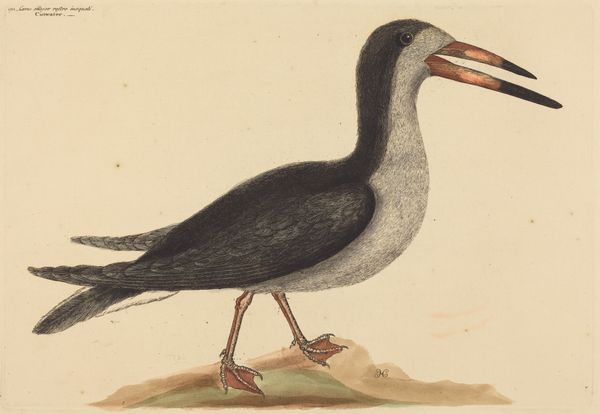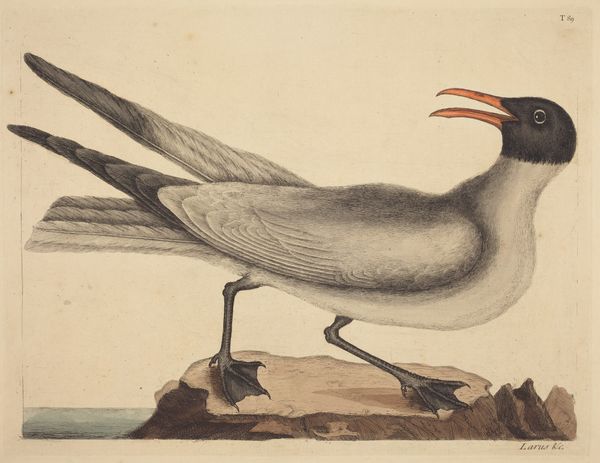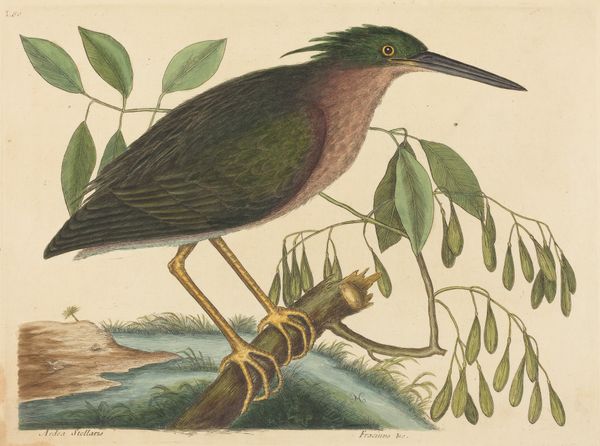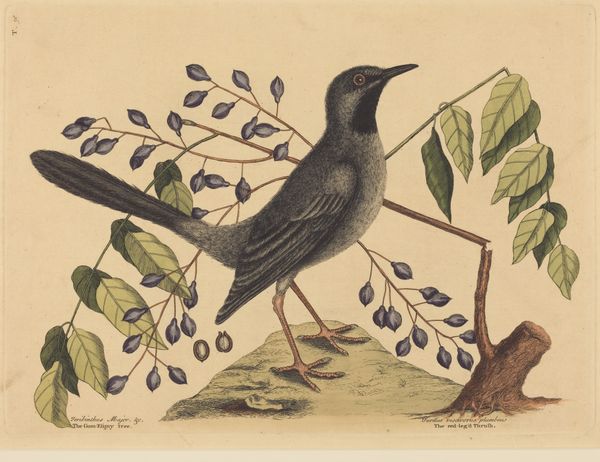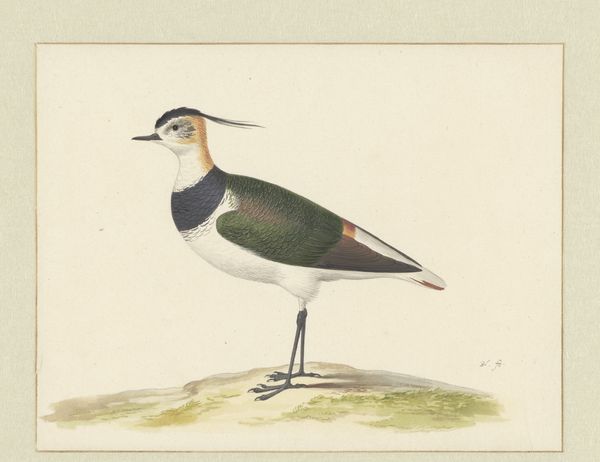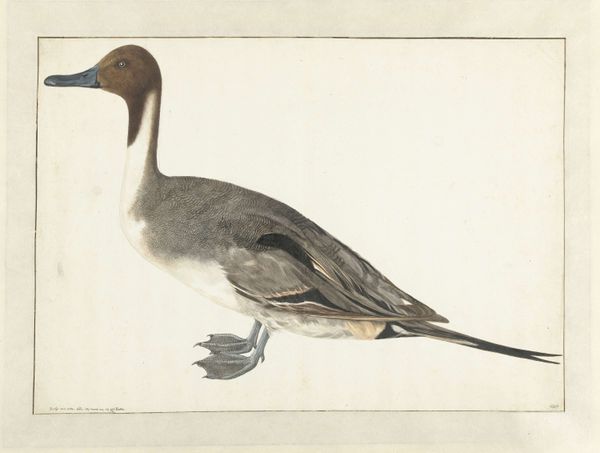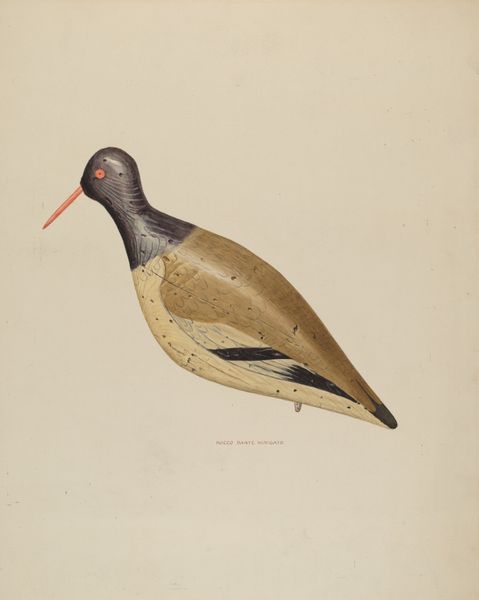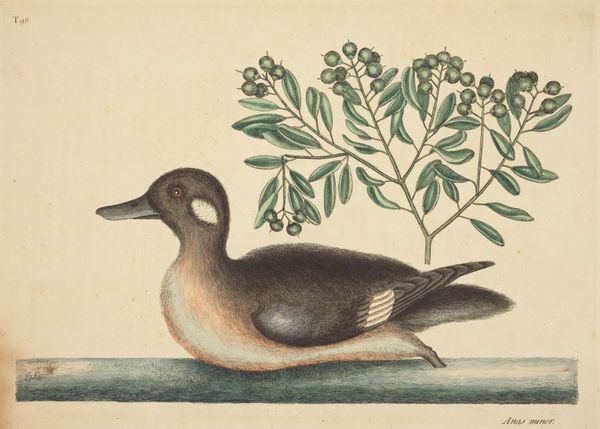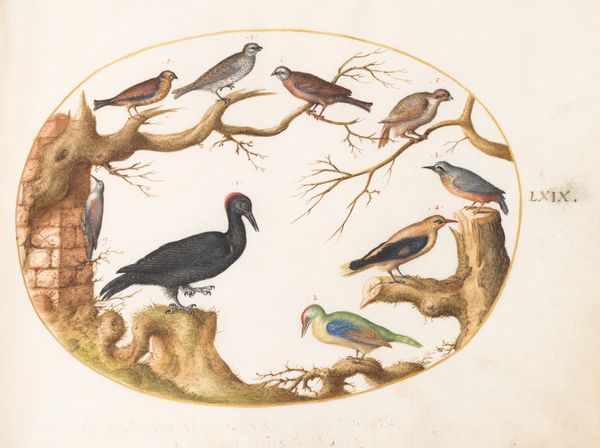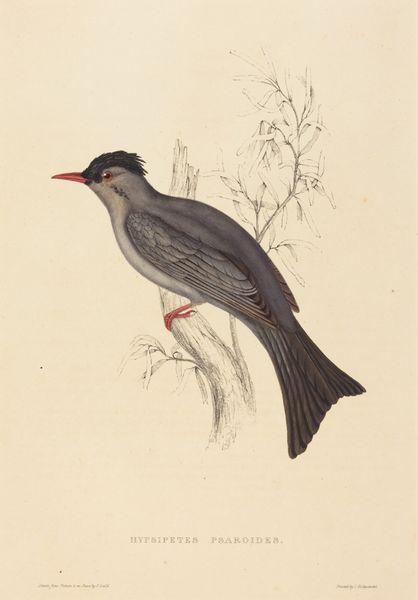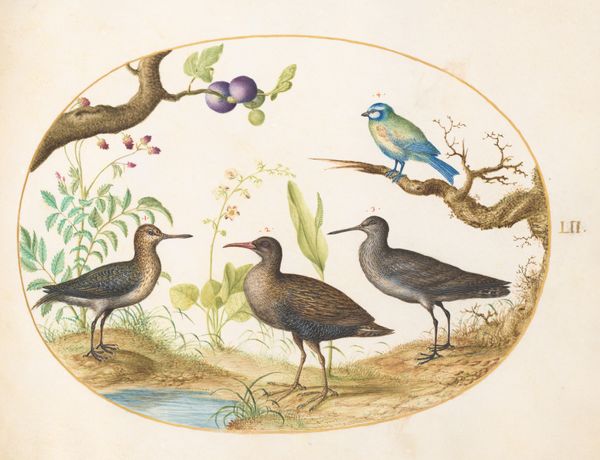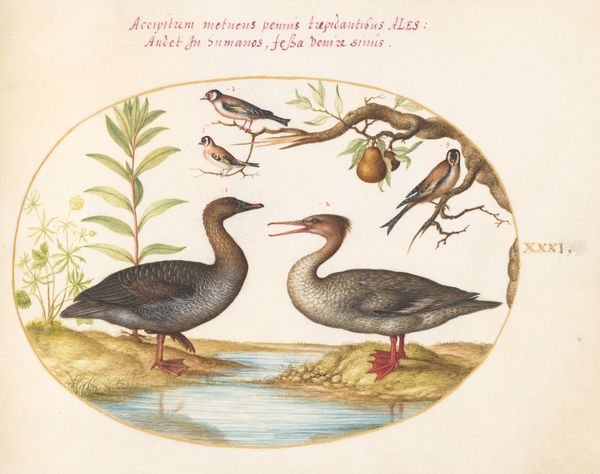
coloured-pencil, print, watercolor
#
coloured-pencil
# print
#
watercolor
#
coloured pencil
#
animal drawing portrait
#
watercolour illustration
#
history-painting
#
watercolor
Dimensions: plate: 26.4 x 36.7 cm (10 3/8 x 14 7/16 in.) sheet: 34.8 x 50.2 cm (13 11/16 x 19 3/4 in.)
Copyright: National Gallery of Art: CC0 1.0
Mark Catesby created this print of an Oyster-catcher in the first half of the 18th century. Catesby was an English naturalist who travelled extensively in the American colonies. This image comes from Catesby’s ‘Natural History of Carolina, Florida and the Bahama Islands,’ a pioneering work of natural history. It reflects the growing scientific interest in the natural world but also the colonial project of exploration and exploitation. By creating detailed images of plants and animals, Catesby contributed to the European understanding of the Americas. The choice of the Oyster-catcher, a bird found on both sides of the Atlantic, suggests an interest in connecting the Old World and the New World. To understand this artwork better, we can explore the history of science, colonialism, and the artistic conventions of natural history illustration. We can see this image as both a scientific record and a reflection of the complex relationship between Europe and the Americas.
Comments
No comments
Be the first to comment and join the conversation on the ultimate creative platform.
